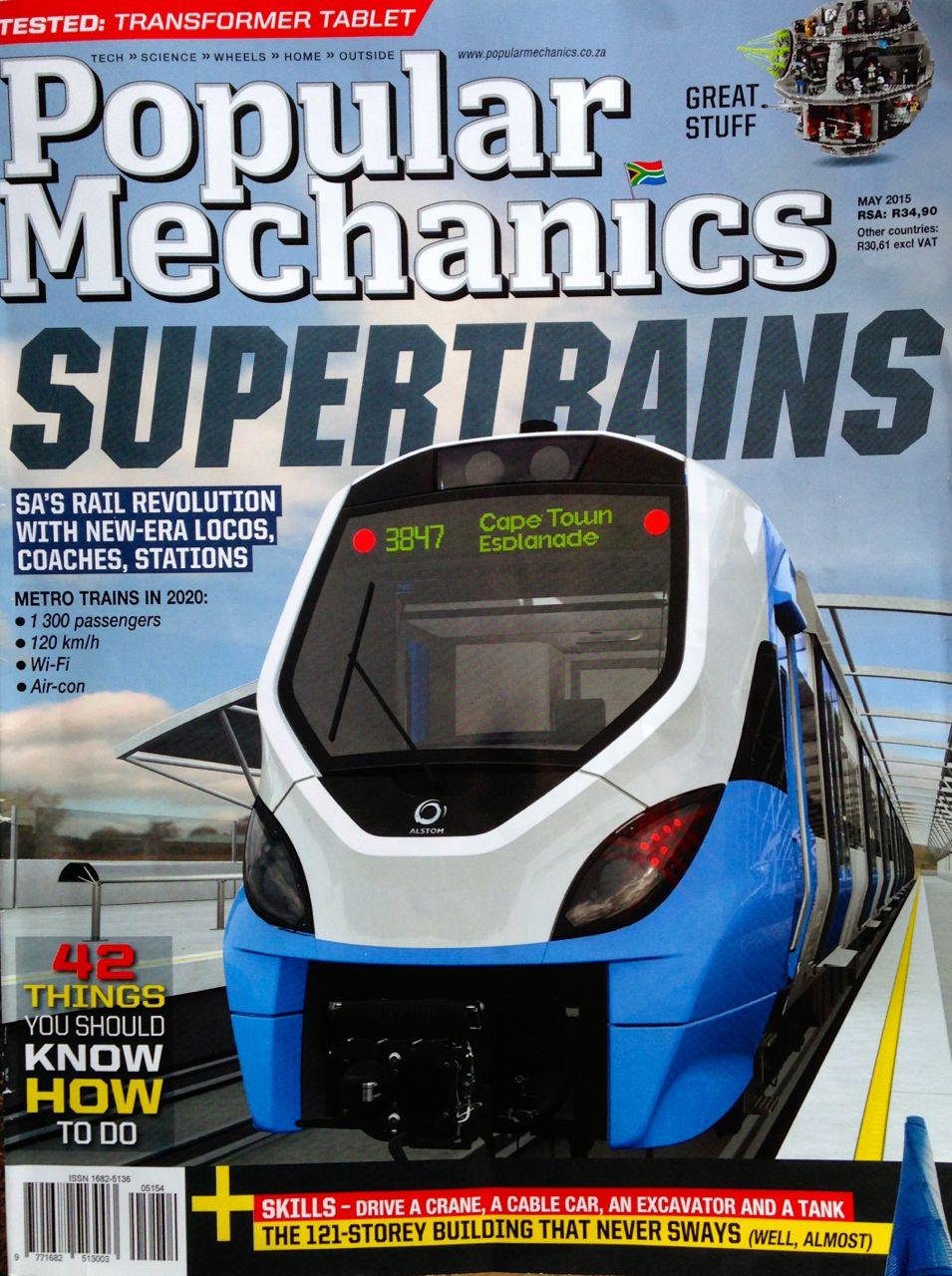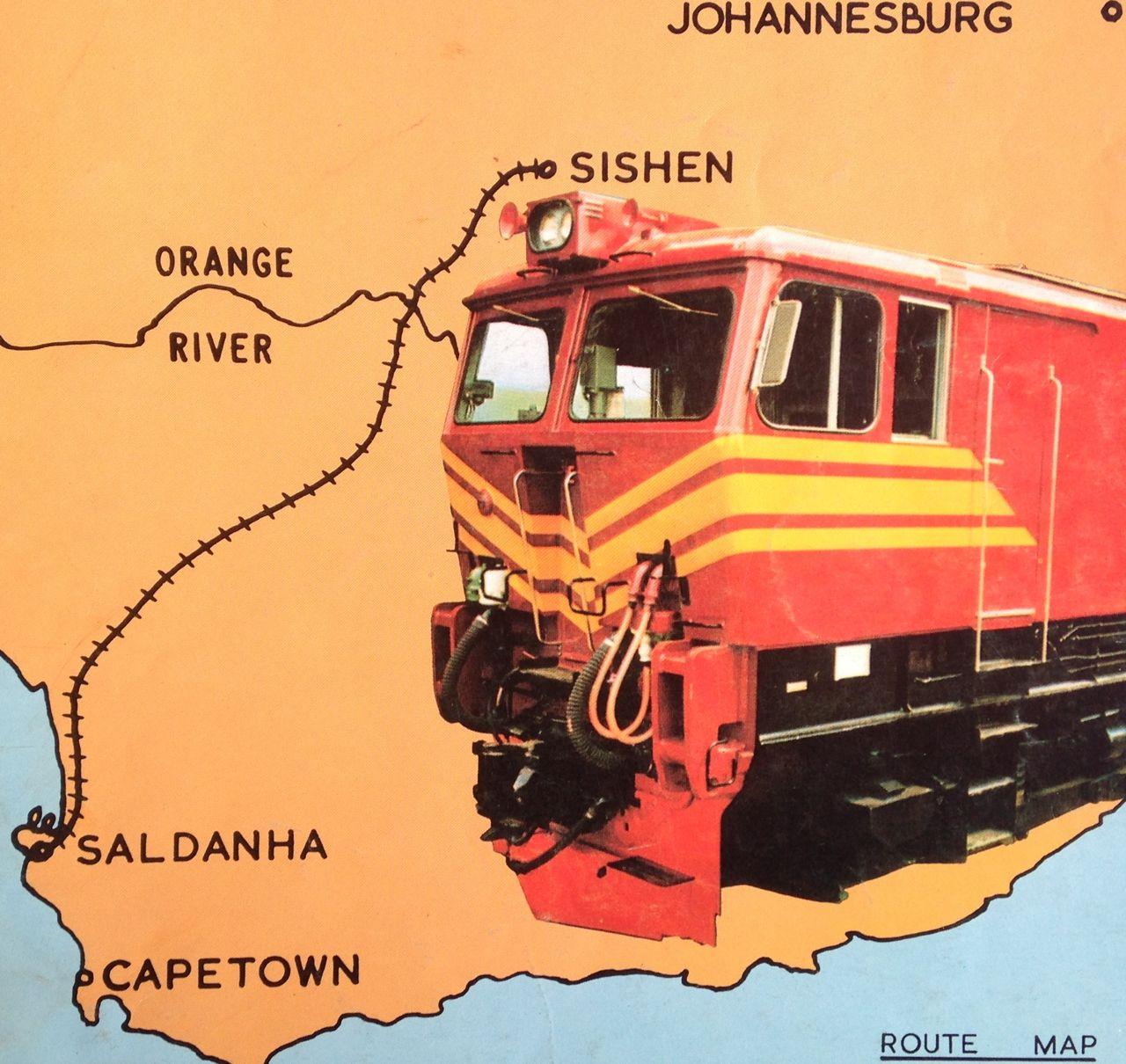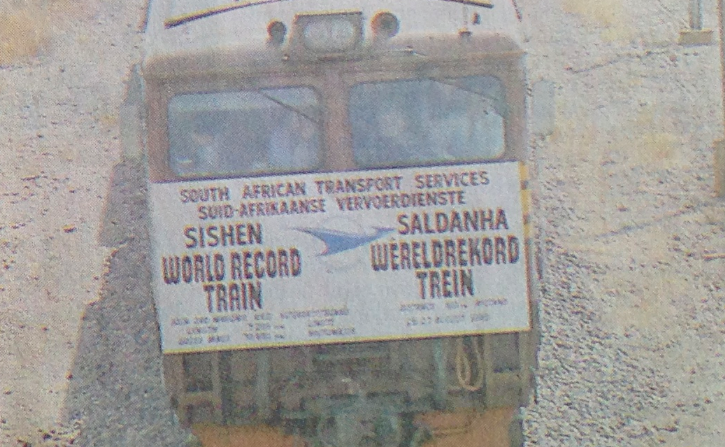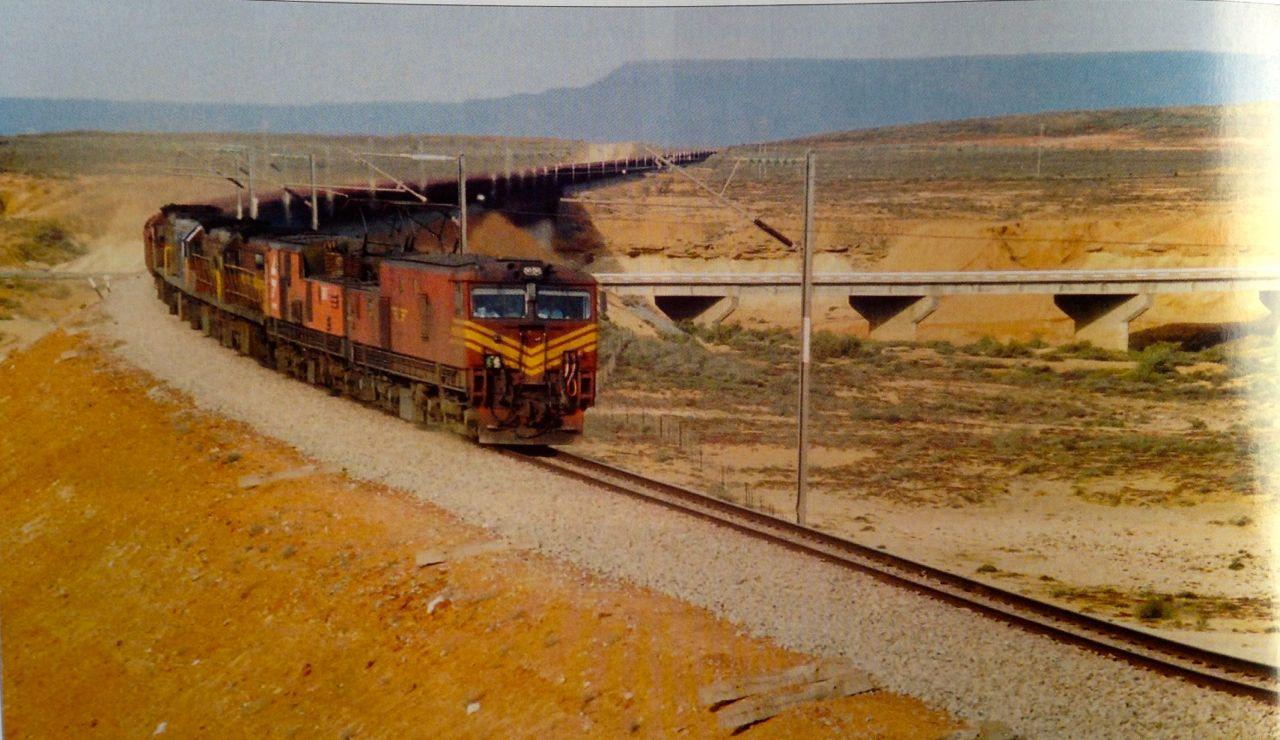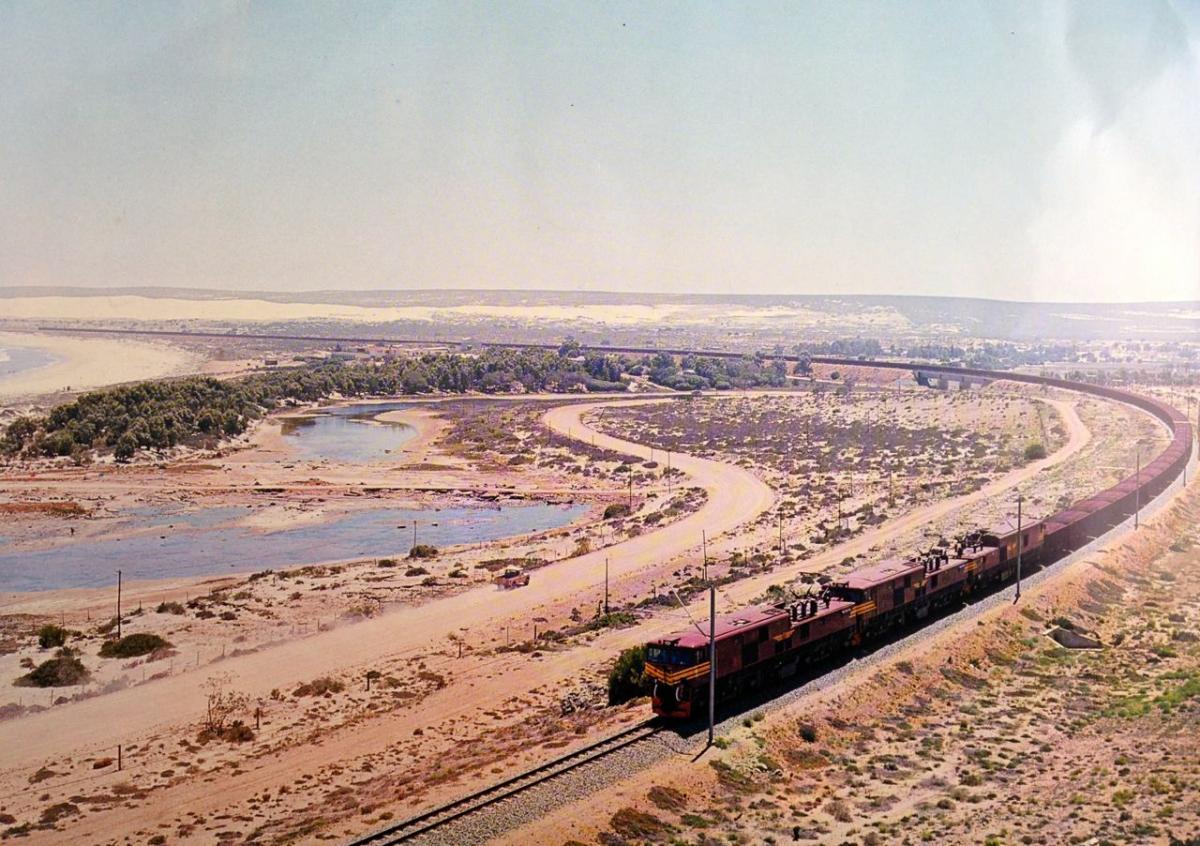
Disclaimer: Any views expressed by individuals and organisations are their own and do not in any way represent the views of The Heritage Portal. If you find any mistakes or historical inaccuracies, please contact the editor.
An article published in the May 2015 “Popular Mechanics” magazine (RSA edition), was entitled “SUPERTRAINS coming down the line” in which it was stated “Let’s get one thing straight: we don’t send much freight via railway because the country’s extensive rail network is too narrow”. Yes it is true that South African wagons run on a narrow gauge track (1065mm) - narrow by definition being a gauge less than the standard gauge of 1435mm (4’-8½”). However our loading gauge with the height and width of rolling stock being 3.965 metres (13’-0”) and 3.050 metres (10’-0”) respectively is no more restrictive than that of the United Kingdom. In point of fact the width allowance for wagons in the UK is only 2.745 metres, 305mm (12”) less than ours.
May 2015 Popular Mechanics Cover
The narrow rail gauges that were chosen by the European colonial powers during the nineteenth century were right for the time but have now become quite a bone of contention on the African continent as they are blamed by politicians and railway administrators as being the root cause for the poor performance of railways in the post colonial period (1960 onwards).
It has been mooted that the Durban to Johannesburg main line should be replaced by a R300 billion (at 2012 values) high speed standard gauge railway line that would compete with the airlines for passenger traffic and convey freight more rapidly in larger proportioned wagons (i.e. those having an increased loading gauge). A good indication as to the feasibility of such a rapid rail link in South Africa is the Standard Gauge Railway of Kenya (SGR), which is being built between the coastal port of Mombasa and Nairobi; the economic hub of East Africa. The similarity with the Durban to Johannesburg transport corridor is unmistakable.
The SGR’s first phase, from Mombasa to Nairobi, is scheduled for completion by June 2017, with future extensions planned onwards to Kampala, Kigali and Juba. The Chinese are the main financial backers for the project and the main contractor is the China Road and Bridge Corporation (CRBC). The design parameters, taken from the “Developing a World Class Standard Gauge Railway” (Ref 2) are as follows:
- Rail Gauge 1 435 mm
- Single track
- Axle loading - 25 tons
- Tonnage of a freight train - 4000 tons
- Horizontal curvature – 1200 metre radius
- Loading Gauge – suitable for double stacking of shipping containers & future electrification at 25 kV AC (the current world standard, no pun intended)
- Train speeds – 160 kph for passenger & 100 kph for goods.
The Passenger Rail Agency of South Africa (Prasa) however has greater ambitions and envisions passenger trains running, in the year 2025, at a speed of 320 kph (200 mph) during the daytime with freight trains running during the night. The vision is a grandiose one which comes with a hefty price tag which will require a Public-Private Partnership (PPP), offering a concession (say 35 years) to a suitable private enterprise. It has been argued that this is something South Africa needs to invigorate its economy.
Should the costs prove to be too prohibitive for a standard gauge High Speed Train (HST) that compares to those running in Europe and Japan there is a Plan B as Transnet Freight Rail - TFR (formerly South African Railways) has the know-how to develop its Cape Gauge (1065mm) to the optimum, which could meet or exceed the parameters laid down for the Standard Gauge Railway of Kenya. This would also have the added benefit that through running to our neighbouring states would still be possible.
As far as the carrying of freight is concerned TFR has 39 years experience with heavy haulage of bulk commodities on the Cape Gauge, namely iron ore and manganese on the OREX (Ore Export) line from Sishen to Saldanha Bay and coal on the coal export line from Ermelo to the Richards Bay Coal Terminal (RBCT). On the OREX line the axle loading is 30 tons allowing 100 ton capacity wagons to run on 60 kg/m (120 lb/yd) rails, which exceeds the 25 tons specified for the Kenyan venture. The OREX line runs some of the longest trains in the world at 3.8 kilometres.
Map of the Orex Line (Railways Magazine 1980)
World Record Train (The Star)
These trains have 342 wagons of 100 tons capacity running on Scheffel self steering bogies totalling a gross mass of 41 400 tons. Traction is by 7-12 locomotives (the actual number being dependent on the classes of loco operated). The locos are placed at the front, to the rear and are also positioned along the length of the train such that the train comprises three 114 wagon sets linked together (in order to keep the draw bar pull within limits) and they speed the train along at 80 kph (50 mph). A two man crew control the train from the front locomotive by means of Radio Distributed Power (RDP) technology. The locos are class 9E or 15E 50 kV AC electrics operating in unison with class 34 or 43 diesels. The use of both electric and diesel motive power together is due to the sub-stations along the route being spaced at long distances apart and because of this the supply voltage can vary from as much as 55 kV to as little as 25 kV. This would be detrimental to the performance of an all electric powered train.
An Engine on the Sishen Line (Continental Modeller)
What the above proves is that South Africa can shift heavy loads on a narrow gauge without resorting to converting to the standard gauge and what we really need is a rail network which has the capacity to rid our roads of the heavy articulated trucks that traverse our land. There are 20 000 km of railway infrastructure just waiting to be upgraded and thereafter properly maintained to accomplish this. Of course there are vested interests in road haulage that come into the equation, but it is for our government to make equitable decisions on behalf of society. As anyone can testify, it is a daunting experience to drive from Johannesburg to Durban on the N3 highway with the great number of trucks on the road. Lucky Montana, the former CEO of Prasa, back in June 2010, said that the Durban-Johannesburg corridor is “extremely busy” and that it will only “get worse over the next 15 years. It requires increased rail capacity and we have to move if we do not want to be left behind” (from Engineering News 09-06- 2010).
New more powerful locomotives are being imported by Swifambo, from “Vossloh Espana” of Valencia Spain, to be leased to Prasa so as to rejuvenate our long distance passenger services, known as the “Shoshaloza Meyl”. These locomotives are initially twenty diesels of class AFRO4000 to be followed by fifty electo-diesel hybrids of class AFRO DUAL. The locomotives closely follow the specifications of the tried and tested EURO4000 and EURO DUAL which have been in service throughout continental Europe since 2007 and 2012 respectively. The only difference between AFRO and EURO models is that the bogies of the AFRO are made to suit our Cape gauge instead of the Standard gauge. As many readers will know, this has brought about a certain amount of controversy as the locomotives already landed in South Africa may well be “out of loading gauge” as they are higher than the stipulated 3.965 metres (13’-0”). An investigation is underway to determine the consequences and what can be done to remedy the situation. It is certainly hoped that a workable solution can be found as the locomotives are just what we need.
References and further reading:
- “SUPERTRAINS - Coming down the line”, Popular Mechanics (RSA Edition) May 2015.
- “Developing a World Class Standard Gauge Railway - Proposed Railway Master Plan in Kenya & the Region” on line from “Standard Gauge - Kenya Railways Corporation”.
- “High Speed Durban-JHB rail link viable says Prasa’s Montana”, Engineering News dated 9th June 2010.
- “Japan presents plan for Jo’burg-Durban bullet train”, Business Report 23-01-2013.
- “South Africa’s Ore Line”, Railways Africa 2009 (based on a Transnet article).
- “Special issue: Coal line improvements and expansion of Richards Bay coal handling facilities”, the Civil Engineer in South Africa, Volume 27 No. 3, March 1985.
- “Road-to-Rail policy crucial for rural areas”, Rail Infrastructure, Engineering News, June 26-July 2, 2015.
Comments will load below. If for any reason none appear click here for some troubleshooting tips. If you would like to post a comment and need instructions click here.

